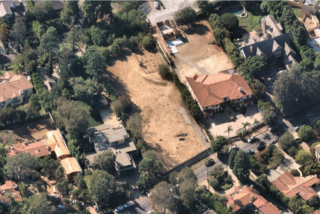BOOK REVIEW: SCIENCE : Can Cyberspace Help Enhance City Space? : A SCIENTIST IN THE CITY <i> by James Trefil</i> ; Doubleday, $23.95, 266 pages
- Share via
Of the many “Cities of the Future” explored in the second half of this book, the one that interests writer and physicist James Trefil the most is located not on this goodly frame, the Earth, but in cyberspace.
Donning “virtual gloves” and a head-mounted display, Trefil ambles through a computer-simulated microscopic world, where he “can ‘feel’ the force between the molecules and, ultimately, find the orientation where they can pull each other in and bind together.”
In “A Scientist in the City,” Trefil tries to give us a similarly intimate understanding of the stones, skyscrapers, bridges and other man-made artifacts of our macroscopic urban environment.
Alas, this is one instance in which a computer program seems clearly superior to a book. Instead of the dazzling CD-ROM software it might have been, this book is something more familiar and problematic: a trade nonfiction title with a vaguely defined target readership.
It’s not a textbook, for like fellow physicist Stephen Hawking, who has wryly recalled his publisher’s admonition that every equation he includes will cost him 10% of his readership, Trefil undoubtedly omitted theorems and diagrams because he thought they would lose him lay readers. But while Hawking’s best essays enable us to understand concepts without intimidating numbers, Trefil’s somewhat condescending style too often assumes that we’re incapable of understanding.
Nor is this book what Trefil promises in his introduction--an illustration of the “technological threads that have been woven together to make cities what they are”--for Trefil fails to incorporate his often-fascinating factoids into a comprehensive theory.
What Trefil does seem to enjoy doing, and what he does extremely well, is explain physical structures in clear and casual, if desultory, prose. Trefil’s explanations would have been enriched by the kind of vivid and elegant color illustrations we saw in David MaCaulay’s “The Way Things Work” (1988). But they would find their ideal place in the kind of virtual reality program described above.
In this program, which we can only hope Trefil will write one day, you could speed up time, for example, and witness the way ordinary glass, described here as “one of the weirdest materials known to science,” is actually more liquid than solid.
You could amble into an old cathedral, note that the glass at the bottom of the window frames is thicker than that at top, and then shrink yourself to the size of an atom and see why: Glass, a chain of silicon and oxygen atoms, is speckled with a crazy grab-bag of random elements and free-floating sodium atoms that over time flow just like a river.
You could make steel, which can be envisioned, Trefil writes, as a pile of marbles (metal atoms) immersed in sticky molasses (a sea of loose electrons). Reinforce the marbles and molasses by adding a few carbon atoms and you’ll get a nice girder capable of letting a skyscraper sway safely during an earthquake; add too many carbon atoms and your girder will snap like a twig.
This is not to say that Trefil’s writing can’t be engaging without the help of a computer. Touching on many topical social issues, he explains, for one, that an efficient forest--one that can absorb 100% of the available sunlight, convert that into productive energy, and then pass on the byproducts of that energy in recyclable forms--offers a model for the efficient city.
But Trefil doesn’t use his copious scientific knowledge to tell us specifically how we can apply the standards of an efficient forest to the city. He offers some amazing factoids about sanitary engineering--e.g. each year, America produces enough solid waste “to fill a line of dump trucks that would stretch to the moon and back a dozen times”--but he doesn’t suggest better forms of waste disposal.
Instead of giving us his opinions about the efficacy of current nuclear waste disposal methods, he simply grouses that “given the political climate in America these days, I have little hope that (nuclear power) will figure prominently in our energy future.”
In the latter half of the book, when Trefil tours “Cities of the Future,” we wonder if he even likes the city as we know it. Like so many bright physicists, Trefil seems anything but the social butterfly.
Consequently, he reserves his highest praise for “edge cities,” where the closest thing to a community is the cable TV public access channel. And he seems relieved that once the phone companies finish laying optical-fiber cables, there will no longer be any need for us to live near a city.
Instead, he writes, we will be able to simply enter our home office, don a virtual reality helmet and enter the cyberspace (computer-simulated) work or shopping environment of our choosing.
This technology, no doubt, will be terrific fun. But in presenting virtual reality as a viable substitute for reality, Trefil forgets the wisdom of such early 20th-Century urban planners as Lewis Mumford, who argued that the alternately heartening and humbling social interactions that take place primarily in cities are a civilizing force.
Mumford’s thinking was once not unlike Trefil’s: “Our most important task,” he wrote as a young man, “is to build castles in the air.” But after witnessing the devastation of World War II, Mumford grew more suspicious of environments that let people behave like kings.
“Life,” he wrote in his later years, “is really more interesting than Utopia.”
More to Read
Sign up for our Book Club newsletter
Get the latest news, events and more from the Los Angeles Times Book Club, and help us get L.A. reading and talking.
You may occasionally receive promotional content from the Los Angeles Times.







